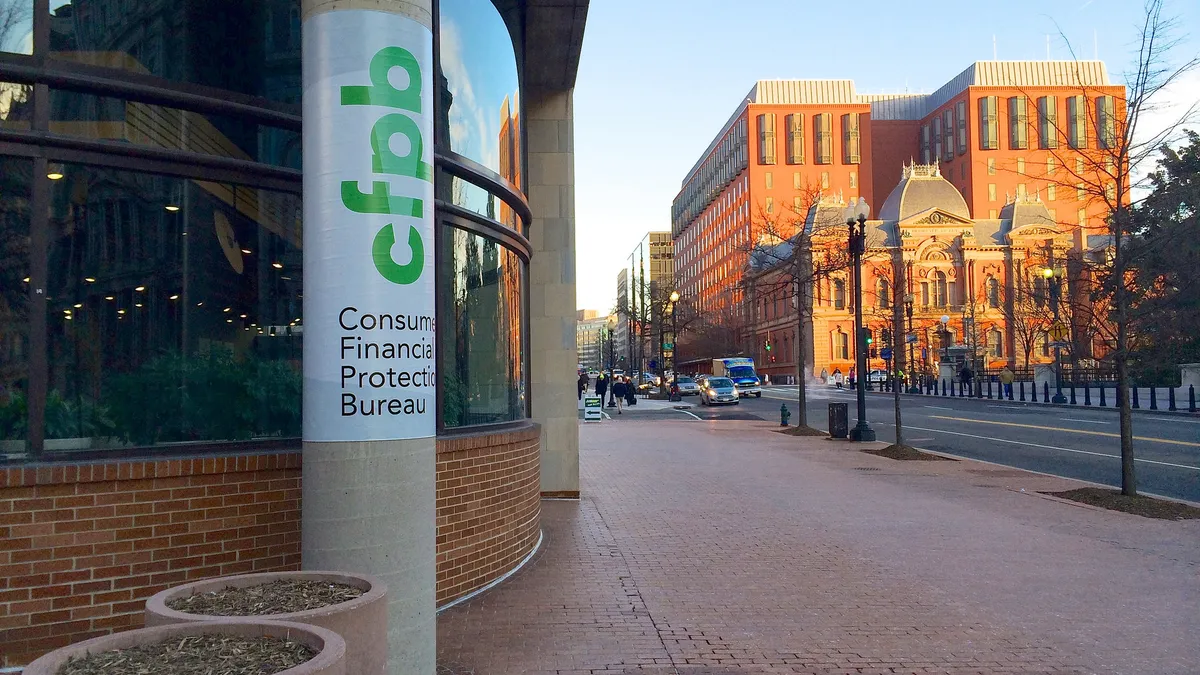The Consumer Financial Protection Bureau (CFPB) is moving forward with plans to issue a final rule regarding consumers' rights to access their financial data, a step many fintechs have pushed for as more consumers turn to apps for their financial needs.
The advance notice of proposed rulemaking (ANPR), which the agency issued Thursday, addresses Section 1033 of the Dodd-Frank Act, a statute that gives consumers the right to access their financial information held by a bank.
Fintechs argue the rule, in its current form, won't prevent banks from overstepping their authority and blocking consumers from sharing their data with certain companies.
"We're glad to see that the CFPB is further examining consumer rights to access financial data and believe the CFPB can be helpful in removing certain areas of ambiguity associated with these important rights afforded under 1033," Steve Smith, CEO of data aggregator Finicity, said in an email.
Smith cited a survey his company conducted this year that found 86% of consumers feel they should have more insight and control over the personal financial information lenders use to determine their creditworthiness.
"This demonstrates that consumer access and control of their financial records is essential, and is a critical component to improving financial literacy and inclusion," he said.
John Pitts, policy head for Plaid, said the CFPB's request for public comment is a critical step toward securing consumers' right to control their financial information.
"Fintech is only becoming more essential to people's financial lives, and the 1033 ANPR is a preview of what the future of financial services could look like — with every company becoming a fintech company, data flowing at consumers' will, and use cases that look at data from across a consumer's financial life to give them real value," he said in an email.
In an earlier interview, Pitts called Dodd-Frank's Section 1033 the "legal underpinning of all of fintech."
"For people who want to round up and save with Acorns, or for people who want to invest with Robinhood, all of those apps rely on the consumer being able to share their bank account information with the app," he said.
But Pitts said there remain many unanswered questions regarding the rule.
"Right now, 1033 is just 75 words long," he said. "Does the bank have the right to tell the consumer, ‘No you're not allowed to use that app, you have to use our service'? We think the CFPB, hopefully, is going to come out proposing a strong consumer data access right."
In the ANPR, the CFPB acknowledged the growing number of consumers who use financial apps to send, save and invest their money.
"The Bureau expects these trends to continue, but also sees indications that some emerging market practices may not reflect the access rights described in Section 1033," the CFPB said.
The ongoing debate
Some fintechs and banks have been at odds in the past year regarding the collection of consumer data.
Using account login credentials provided by the customer, data aggregators like Plaid and Finicity have used "screen scraping" to collect information from users' bank accounts for years.
The practice enables aggregators to connect accounts to fintechs such as peer-to-peer (P2P) payment platform Venmo and robo adviser Betterment.
The method, however, has been challenged by some banks who say the practice is unsafe and often deployed without the full knowledge of the consumer.
Recent security and policy changes at JPMorgan Chase and PNC have blocked some aggregators from accessing passwords.
As an alternative to screen scraping, some data aggregators have entered into data access agreements with banks through the use of application programming interfaces, or APIs, a tokenized method that many banks say is more secure.
But not all banks have the technology budget to build their own APIs, Pitts told Banking Dive in May.
This tech disparity between the big banks and small institutions, such as community banks and credit unions, can lead to a lack of consumer choice, he said.
"The last thing we would want is a future where the digital options for customers of Wall Street banks are different from the digital options of the customers of Main Street banks," Pitts said.














